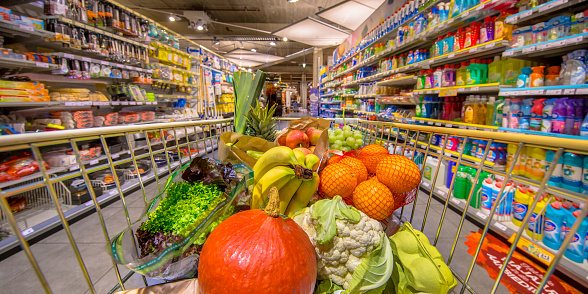As inflation is raising the cost of food items at supermarkets, some residents in Forest Hills say they are cutting down their shopping lists and strategizing on how to save more money when it comes to buying groceries.
A few months ago, Heather W. noticed an increase in the cost of produce and other food items that she usually buys at the grocery store.
“I went shopping yesterday, and a loaf of bread that was $1.99 for quite some time is now $2.49. I was dumbfounded when I saw that,” Heather told QNS. “A bag of tomatoes has gone up from $1.99 to $2.49, and a bag of potato chips also went up from $1.99 to $2.49.”
According to Heather, who lives with a roommate and does her own shopping, her monthly budget for groceries is more than $200. She goes grocery shopping at least once a week to buy fresh produce.
“Depending on what I need, I’ll go to three main grocery stores: Trader Joe’s, Whole Foods and ShopRite. My main staples that I get every week is an organic bag of salad, tomatoes, carrots and celery. For other items I’ll change my weekly list depending on what’s on sale at Whole Foods and ShopRite,” Heather said.
In order to save money, it’s important for Heather to plan her budget accordingly, and to buy items that are on sale — such as toilet paper and paper towels — rather than buying in bulk, she said.
“I’m always on the lookout for coupons, even if I go to a specific website and print on occasion to use at the grocery store,” Heather said. “I’m not buying as many things as I normally would at the grocery store, and it’s unfortunate what is going on. Companies are extorting people and taking advantage of this time. I think in their mind, they’re thinking, ‘well, the general consumer already knows prices are going up; we’ll just knock it up a little bit more.’ I’ve heard the news that inflation is at 7%, 7.5%, but what I’m seeing at the grocery store is much more than that.”
The Consumer Price Index (CPI), the most widely followed inflation gauge, increased 7% from December 2020 to December 2021 — its highest rate in nearly 40 years, according to the Pew Research Center.
The CPI is a measure of the average change over time in the prices paid by urban consumers for a market basket of goods and services.
The price of food and utilities surged in January from the previous month, according to a report from the U.S. Department Bureau of Labor Statistics.
Cereals and bakery products increased 1.8% over the month, according to the Labor Department. The index for other food at home increased 1.6% last month, while dairy and related products rose 1.1%. Fruits and vegetables rose 0.9% over the month, while meats, poultry, fish and eggs increased 0.3%.
By far the largest increase was for meats, poultry, fish and eggs, which rose 12.2% over the year. Dairy and related products increased 3.1%, the smallest 12-month increase among the groups, according to the Department of Labor.
The increased prices at supermarkets are due in part to the supply chain turmoil, worker shortage, COVID-19 and other issues, according to reports.
For families, who have been navigating the challenges of the COVID-19 pandemic, the rising costs of groceries have been difficult, resulting in cutbacks on spending and omitting certain items from their list.
One Forest Hills resident, who is a parent of two children, says for the most part he and his wife spend only when necessary.
“I find myself buying cheaper grocery items and avoiding the expensive ones — for example, eggs and chicken for protein, and lots of vegetables and certain fruits only,” said the resident, who requested to remain unnamed.
According to another resident, the price of sweet potatoes at Key Food on Queens Boulevard at 71st Road in January was on average 99 cents per pound. For one week, they were on sale for 33 cents. Since February, they have been $1.29, and the cost is similar at Foodtown as well, he said.
In order to save money, some residents have switched stores and commute to other neighborhoods, where the produce is sometimes fresher and cheaper.
For Laura Reyes, who is a single parent raising a teenager, she has now resorted to shopping outside of Forest Hills for groceries. Reyes commutes to Corona, Flushing and Jamaica, and if she’s in Brooklyn or the Bronx visiting or just driving through, she’ll make sure to pick up a few items since it’s much cheaper.
“I used to pay a total of $25 for three packs of different types of meats and now it’s about $65, so I don’t pick it up,” Reyes said. “I get chicken from Western Beef which is cheaper and can be cut into more pieces if I want to make it last. We eat smaller portions and try our best to save everything we don’t eat.”
She also clips coupons and shares a BJs card with her friend and racks up points, which gives them more money that they can spend at a later date.
“I no longer get name brand items, only generic brands especially when on sale. If I’m in CVS, I get their brand. If I’m in Key Food, I get their store brands, and if you use their coupon at the store and online, you’ll get a cheaper price all the time,” Reyes said. “We also go to Walmart after September to get supplies for the kids for next year, which are on sale and have great discounts when they want to empty their inventory.”
Reyes added, “Though it has been hard, I make it work the best I can.”



































